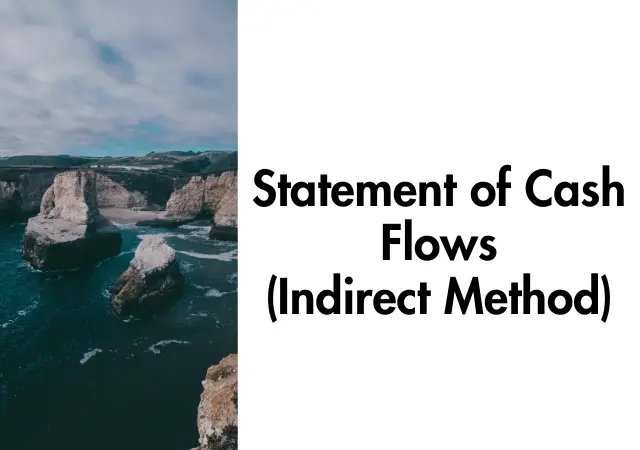The Statement of Cash Flows Indirect Method PRESENTS the SOCF beginning with Net income or loss, with subsequent ADDITIONS to or DEDUCTIONS from that amount for Non-cash revenue and expense items, Resulting in cash flow from operating activities.
International Accounting Standard (IAS 7) STATES that SOCF is a vital ‘Financial Statement‘ that PROVIDES insights into a company’s cash flows from Operating, Investing, and Financing activities during a specific period. It highlights the sources and uses of cash, ENABLING investors, creditors, and other stakeholders to assess a company’s liquidity and financial health.
Table of Contents
What is IAS 7?
IAS 7 INCLUDES Operating activities, Investing activities, and Financing activities.
| Operating Activities This section Reports cash flows resulting from a company’s primary business operations, such as cash received from customers and cash paid to suppliers and employees. |
| Investing Activities Here, cash flows related to the purchase or sale of long-term assets, such as property, plant, and equipment, as well as investments in stocks or bonds, are recorded. |
| Financing Activities This section discloses cash flows from activities that affect a company’s capital structure, including issuing or repurchasing stock, borrowing or repaying loans, and paying dividends. |

Statement of Cash Flows Indirect Method – Overview (As Per IAS 7)
The Indirect method for PREPARING the ‘Statement of Cash Flows’ (SOCF) focuses on adjusting Net income from the Income Statement for Non-cash items and changes in working capital to arrive at the net cash provided by operating activities.
The PRIMARY benefits are:
- Simplicity; It relies on information readily available in a company’s ‘Financial Statements’, i.e. Net income, which Makes it simpler and less time-consuming to prepare compared to the DIRECT Method.
- Reconciliation with Net Income; It starts with Net income from the ‘Income Statement’, allowing users to compare the company’s reported earnings to its actual cash flows.
IAS 7 Statement of Cash Flows Indirect Method – How to Prepare SOCF?
The following steps OUTLINE the process of preparing the ‘Statement of Cash Flows’ via INDIRECT Method:
| (a) Start with Net Income BEGIN with the Net income figure from the ‘Income Statement’. |
| (b) Adjust for Non-Cash Items EXCLUDE Non-cash expenses or gains from Net income and ADD BACK Non-cash revenues or losses. Examples include depreciation, amortization, and gains or losses from the sale of assets. |
| (c) Account for Changes in Working Capital ADJUST for changes in current assets and liabilities. Increase in current assets, such as accounts receivable and inventory, are subtracted, while increases in current liabilities, like accounts payable and accrued expenses, are added. |
| (d) Include Non-Operating Items ADD or SUBTRACT cash flows from non-operating activities, such as interest expense or income and Income taxes. |
| (e) Calculate Net Cash Provided by Operating Activities SUM the adjusted values to arrive at the net cash provided by operating activities. |
| (f) Analyze Investing and Financing Activities PREPARE separate sections for investing and financing activities by identifying cash flows from the purchase or sale of assets and cash flows related to financing transactions. |
| (g) Summarize and Present the Statement COMBINE the Net cash provided by Operating activities, Investing activities, and Financing activities to determine the net increase or decrease in cash and cash equivalents for the period. PRESENT the Statement in a Clear and Concise Manner. |
The Bottom Line
The Statement of Cash Flows Indirect Method is a valuable tool for understanding a company’s cash flow. By RECONCILING Net income with cash flows from operating activities, it provides users with a Comprehensive view of a company’s financial health and liquidity.
Understanding the steps involved EMPOWERS Investors, Creditors, and Stakeholders to Make informed decisions and assess a company’s ability to generate and Manage its cash resources effectively.
Chartered Accountant (Institute of Chartered Accountants of Pakistan)
Bachelor of Accounting Honours (Asia e University, Malaysia)